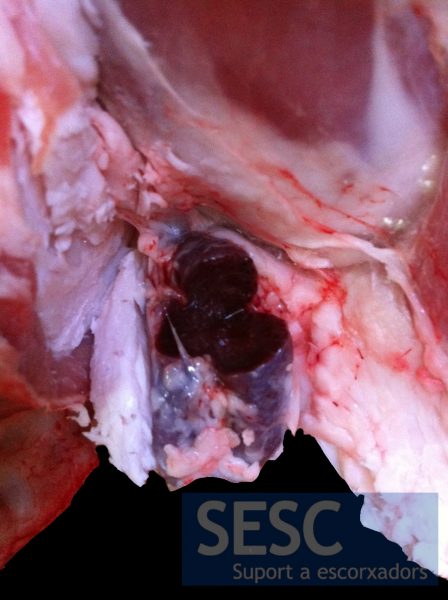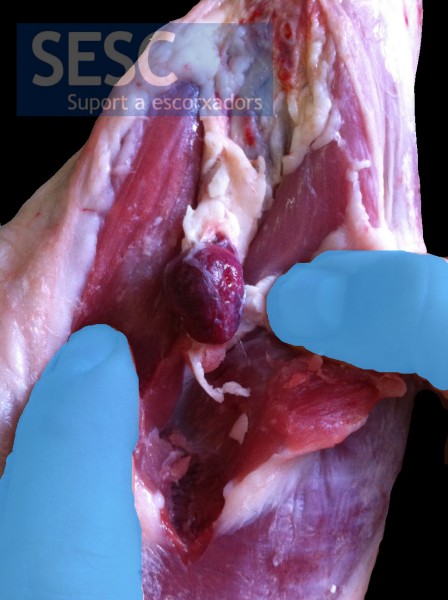Hemorrhagic generalized lymphadenopathy in a lamb
The first diferential to think about when seeing this hemorrhagic aspect in lymph nodes would be reabsorption of extravasated blood, but in this case the bleeding should also have been visible in areas of the carcass or viscera that drain into the affected lymph nodes. It is described, for example, in cases of death with acute respiratory distress that it is common, in calves and lambs, to see this changes in the cervical and thoracic lymph nodes due to reabsorption of extravasated blood in the trachea.
In this case it appears to be a generalized lymphadenopathy and hence could be indicative of a septicemia. If this were the case, one would expect the presence of other obvious lesions, such as widespread petechiae.
There are different agents that can cause septicemia in sheep. For example, septicemic pasteurellosis is a relatively frequent sepsis in sheep and can cause hemorrhage and edematous appearance of lymph nodes. The literature indicates that in a few months old lambs is caused by Manheimia hemolytica, while in lambs older than 5 months is most frequently caused by Biberstinia trehalosi. In these cases lesions in the respiratory tract (such as necrotizing pharyngitis / tonsillitis marked edema and pulmonary congestion), focal liver necrosis and multiple petechiae on mucous and serous of various organs are also often described. In any case histopathology and microbiological culture should be performed to confirm or rule out this possible diagnosis.



